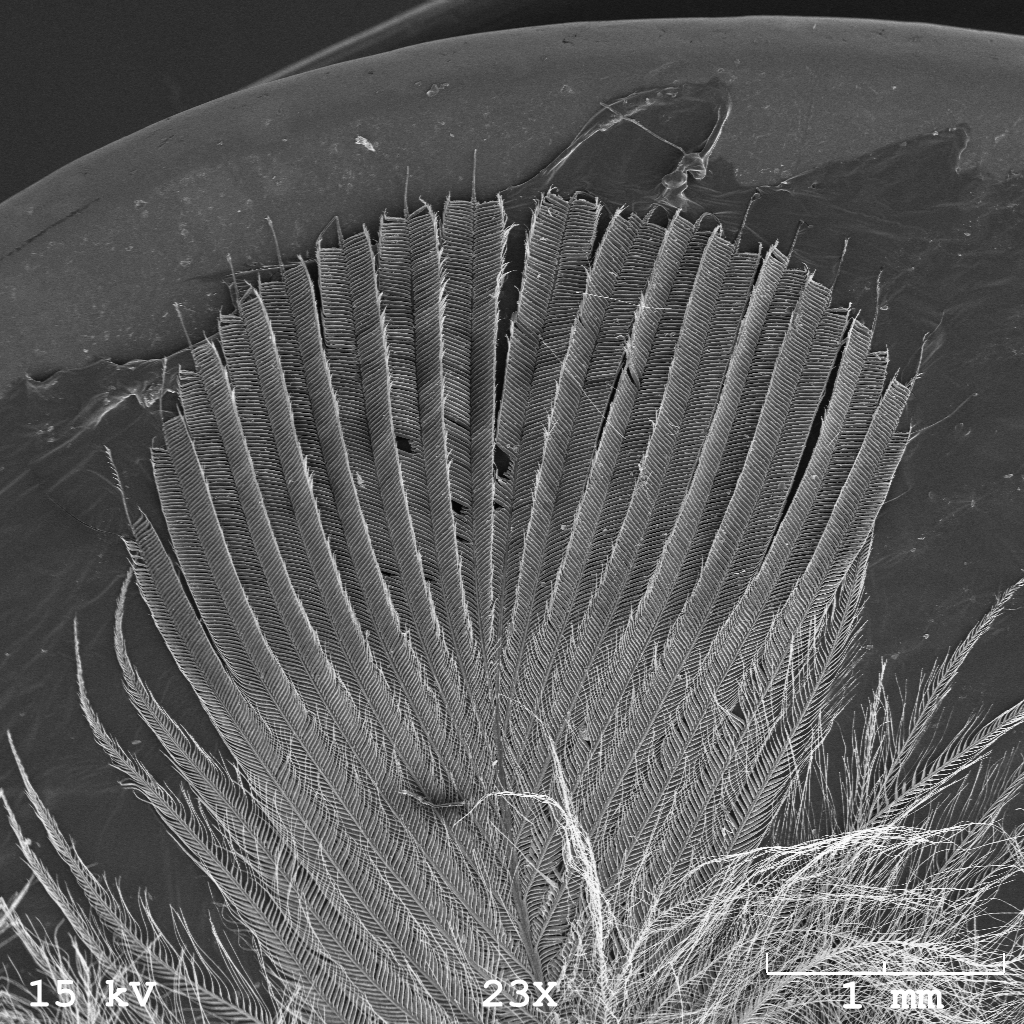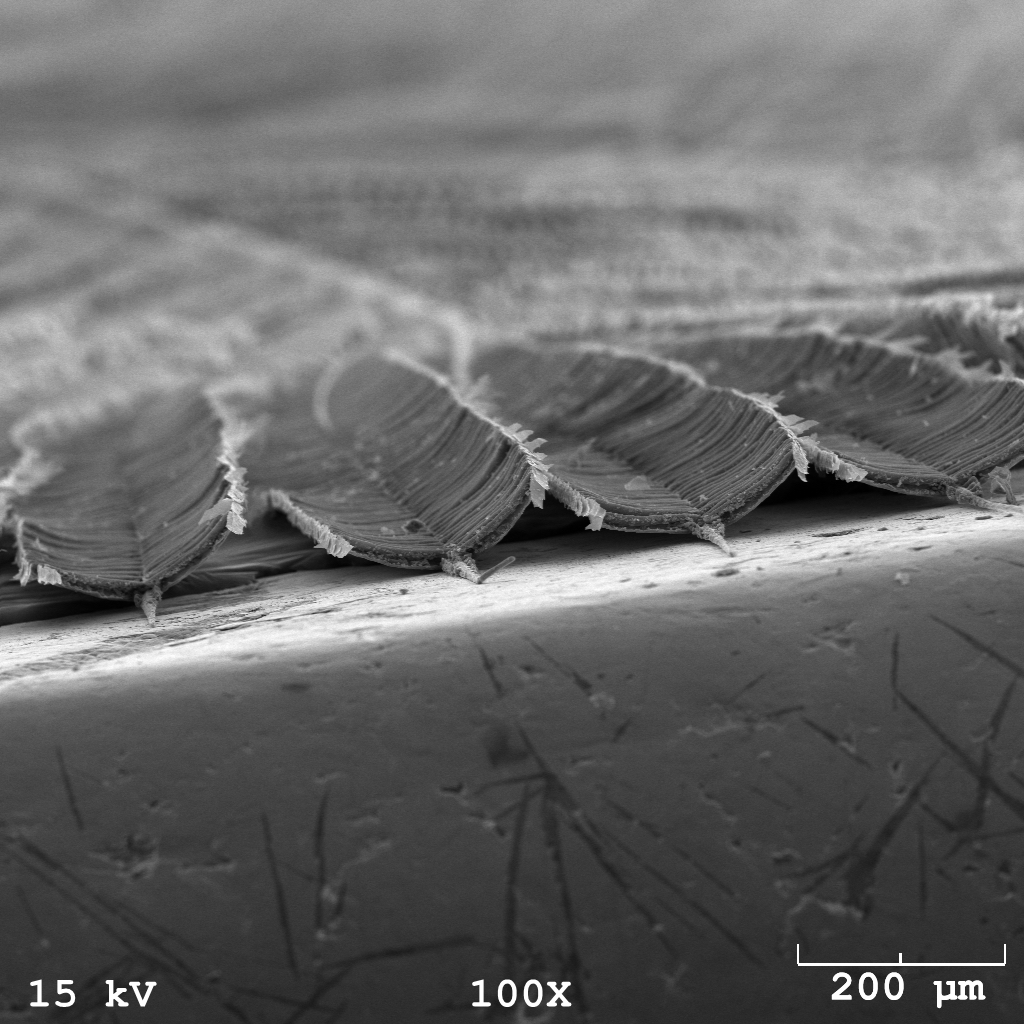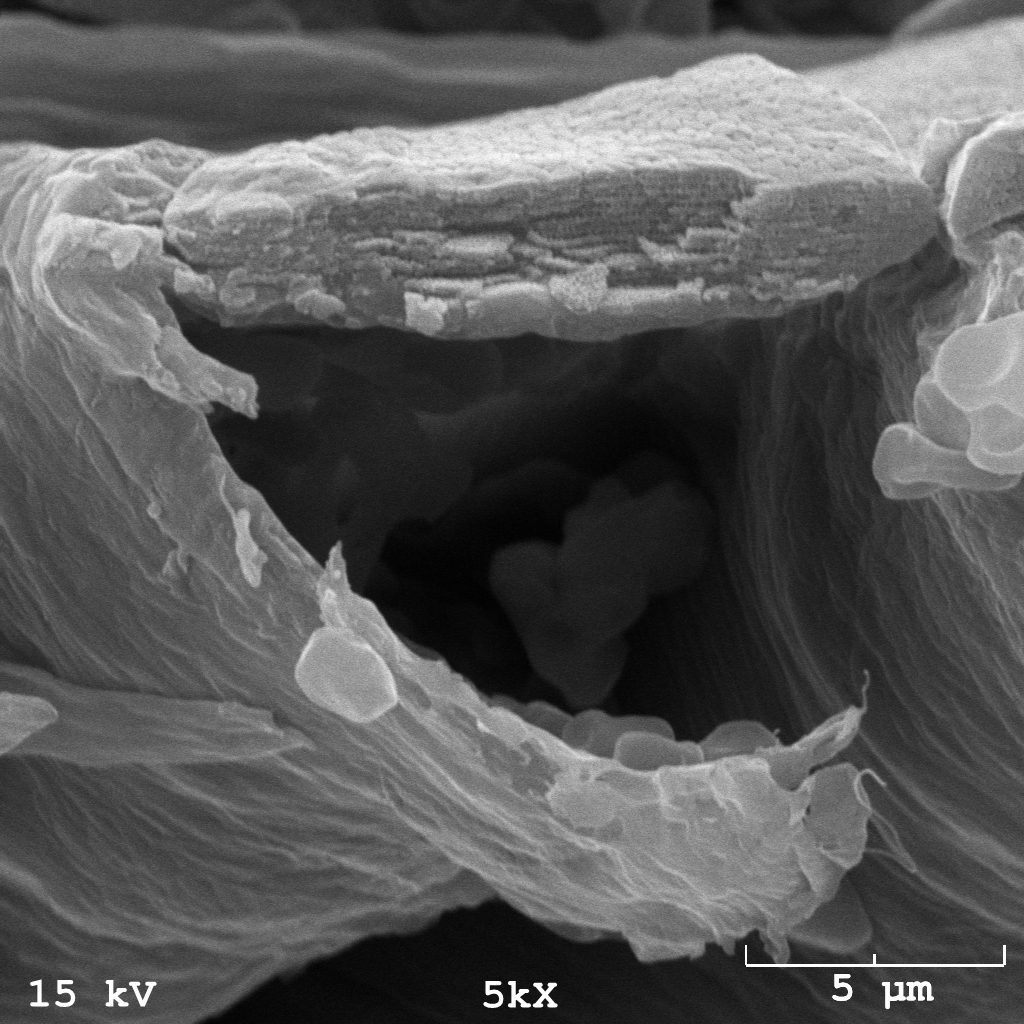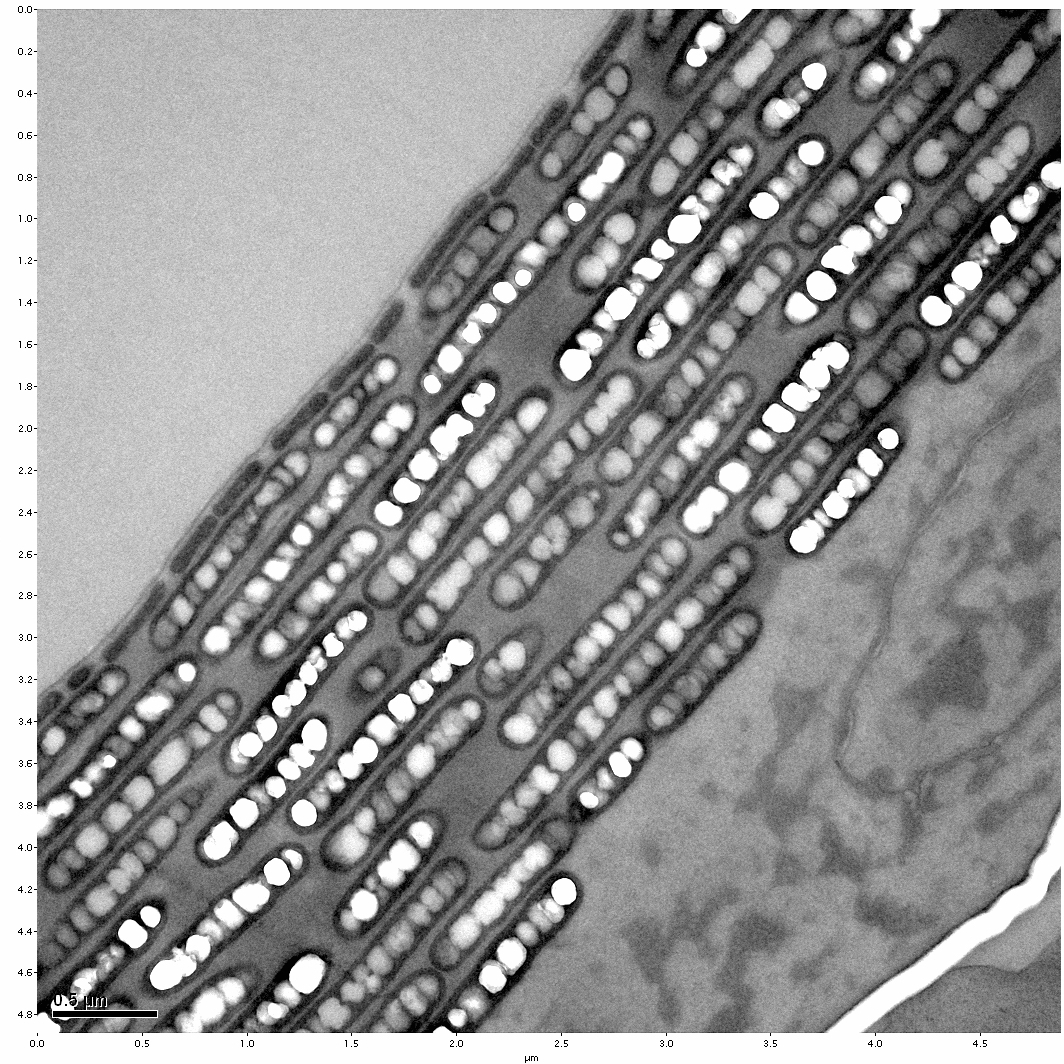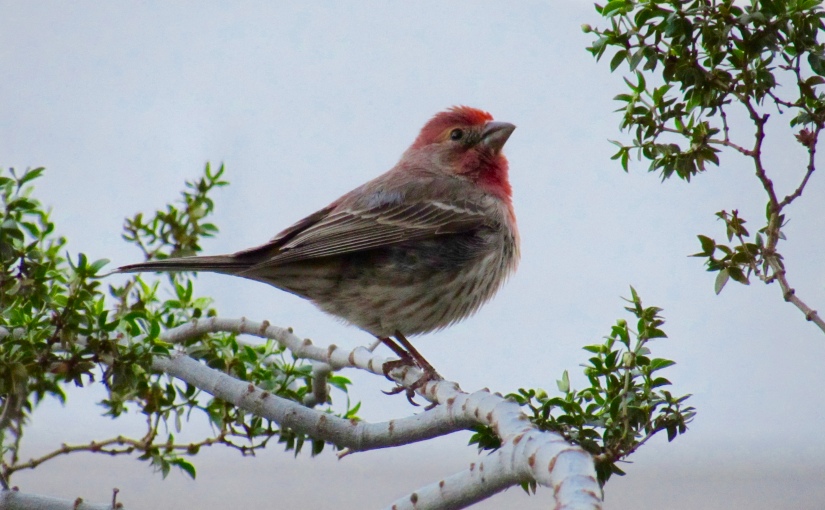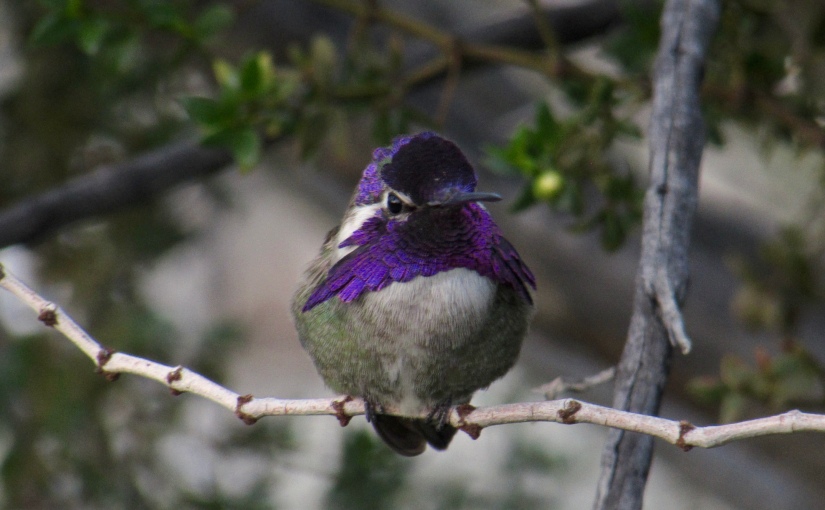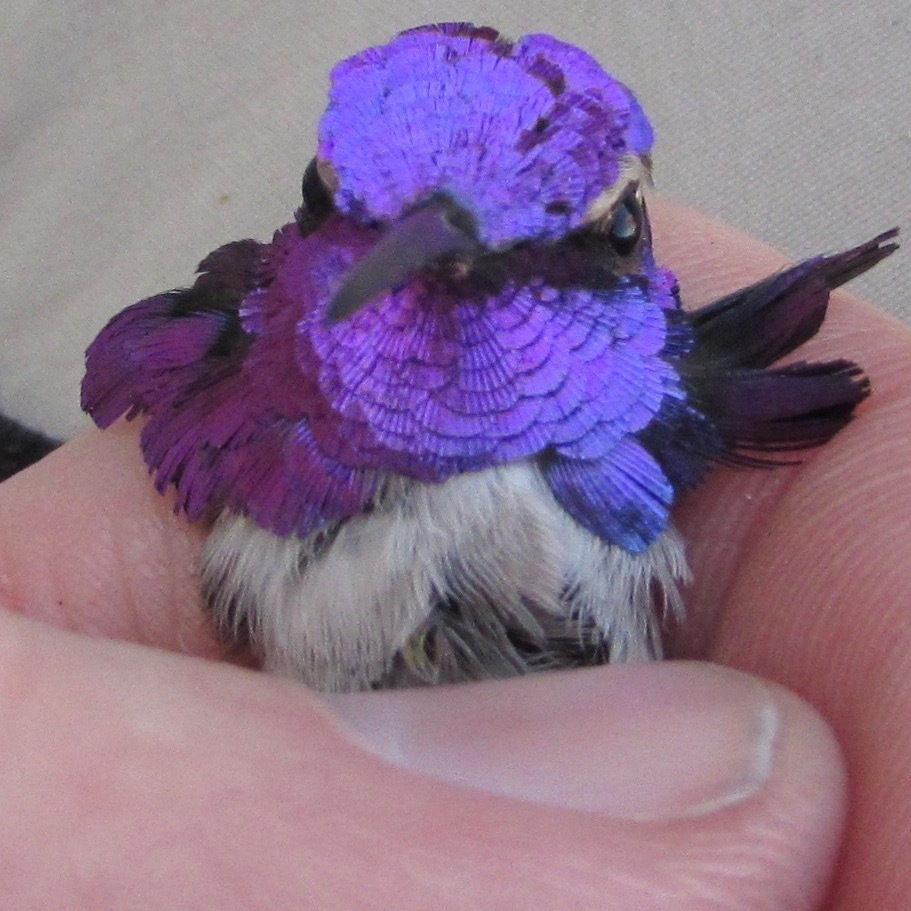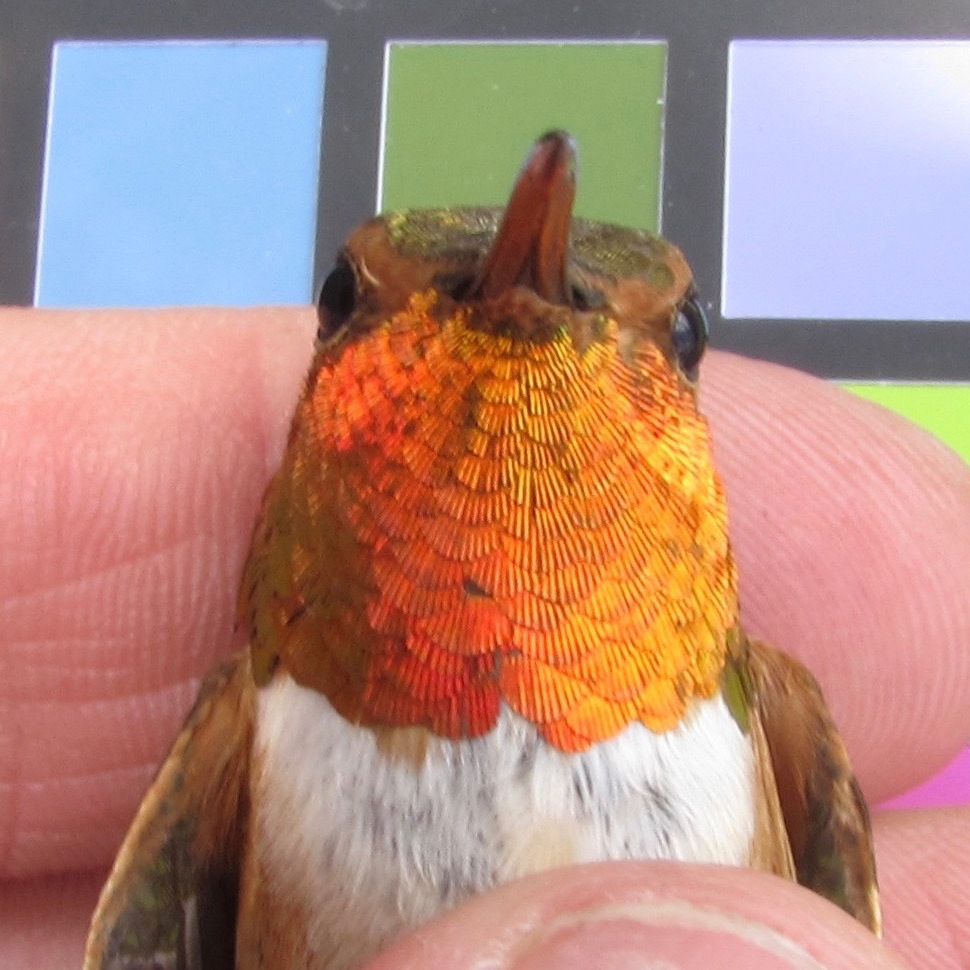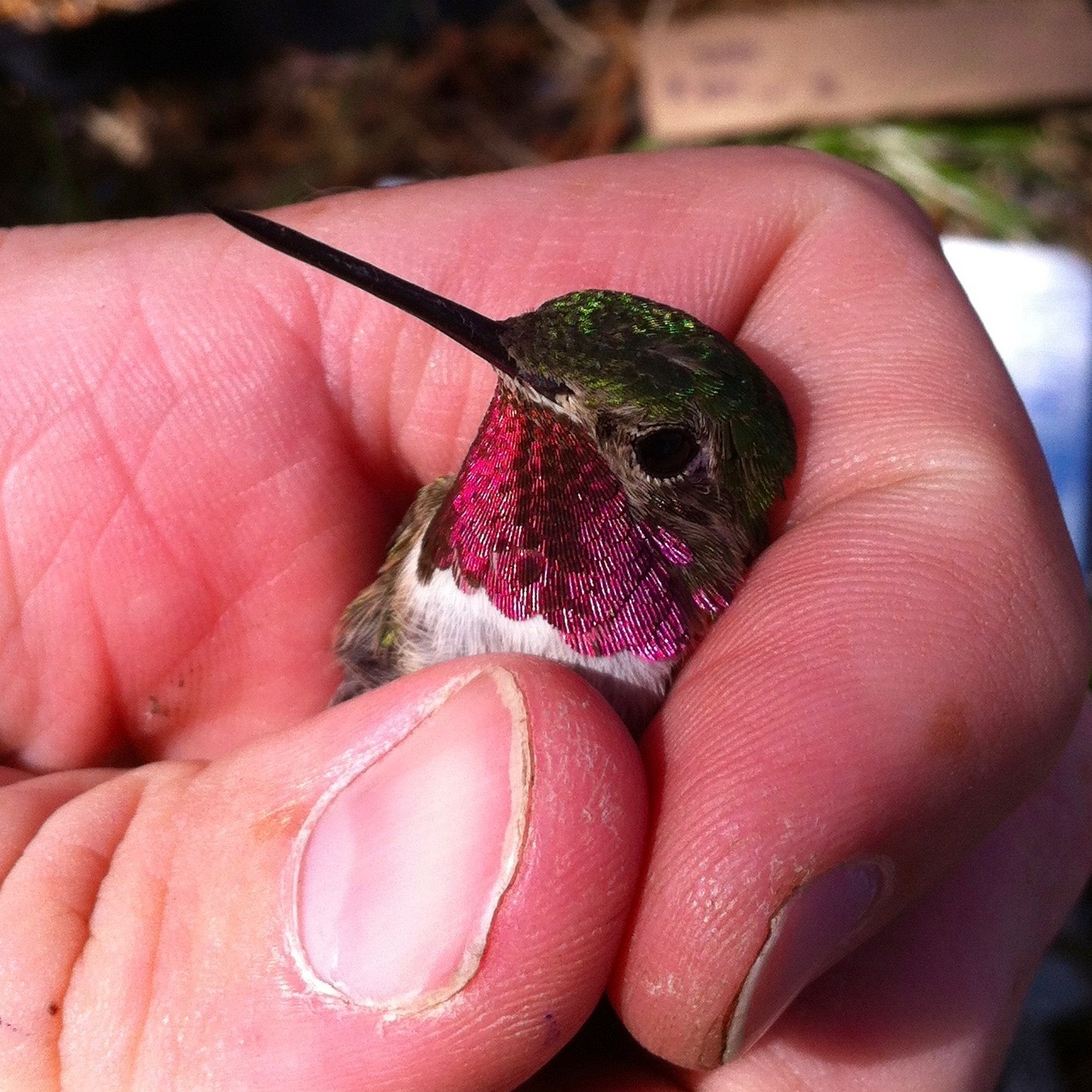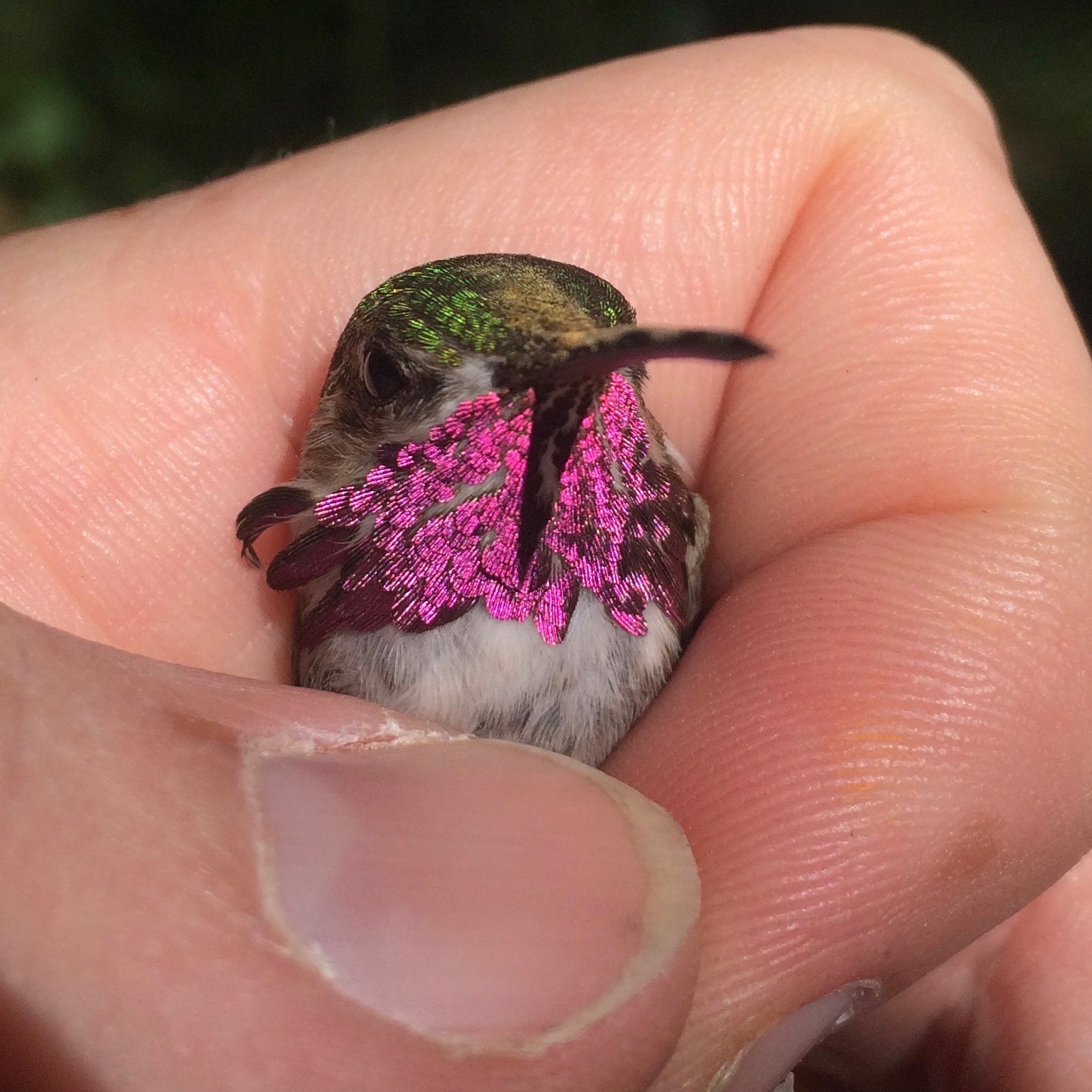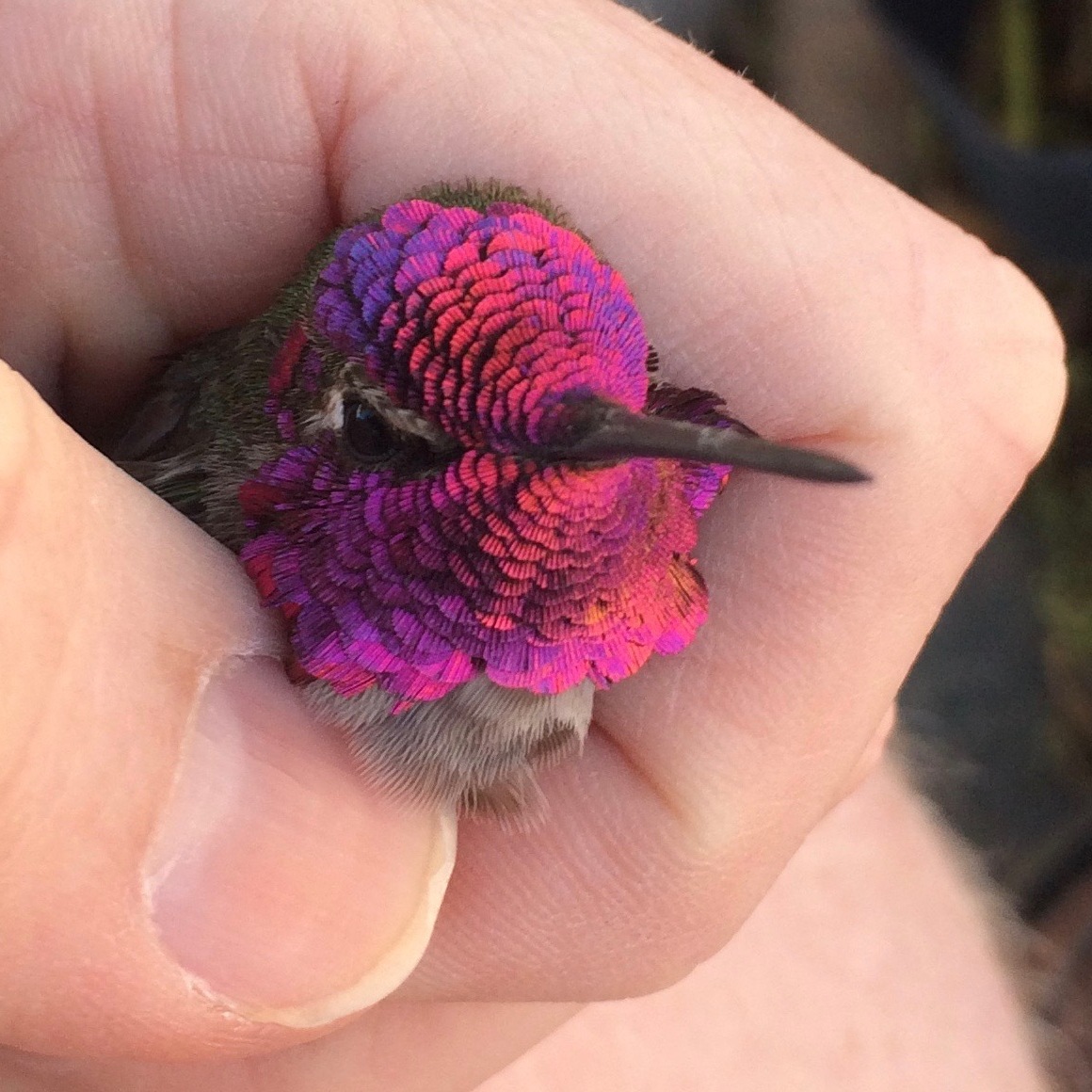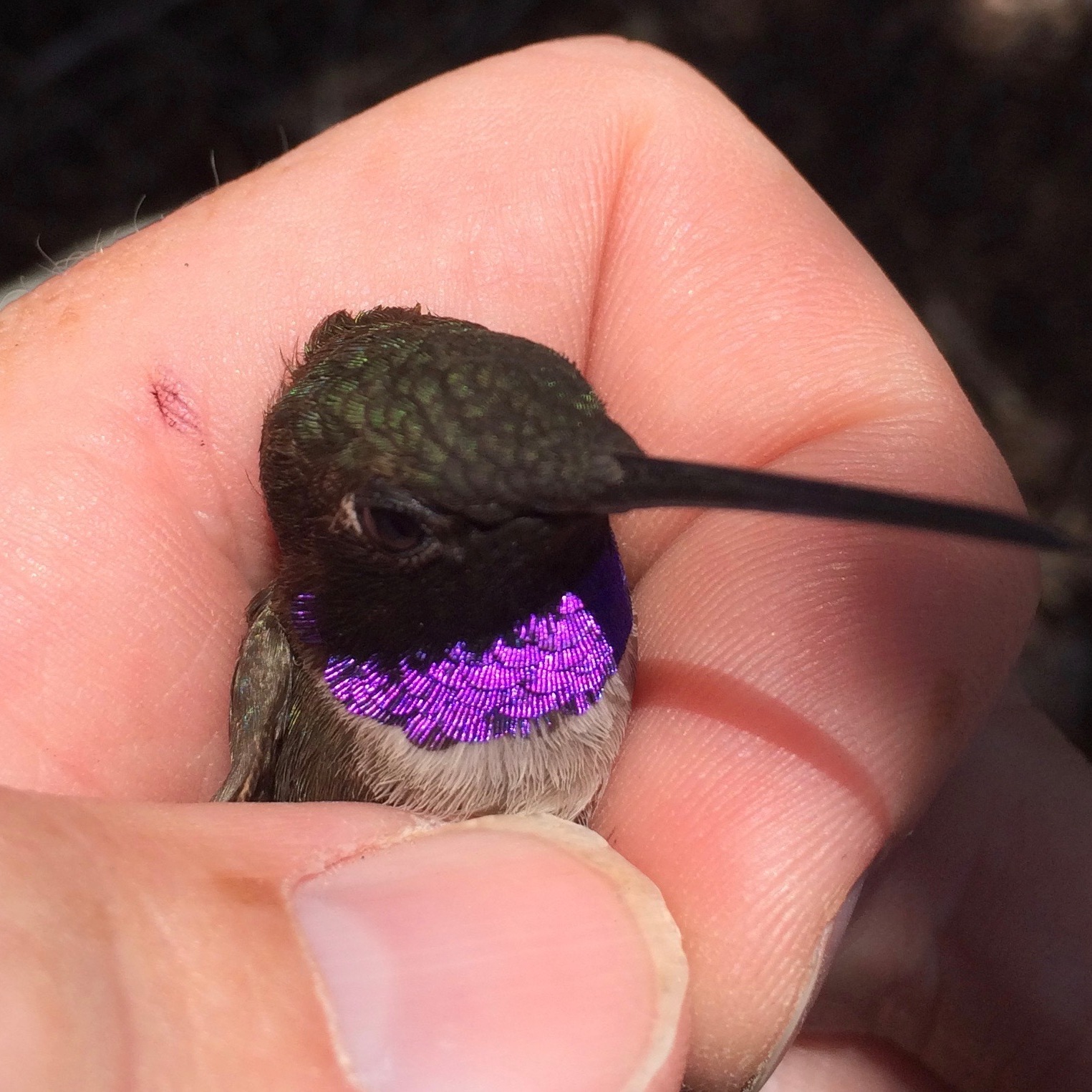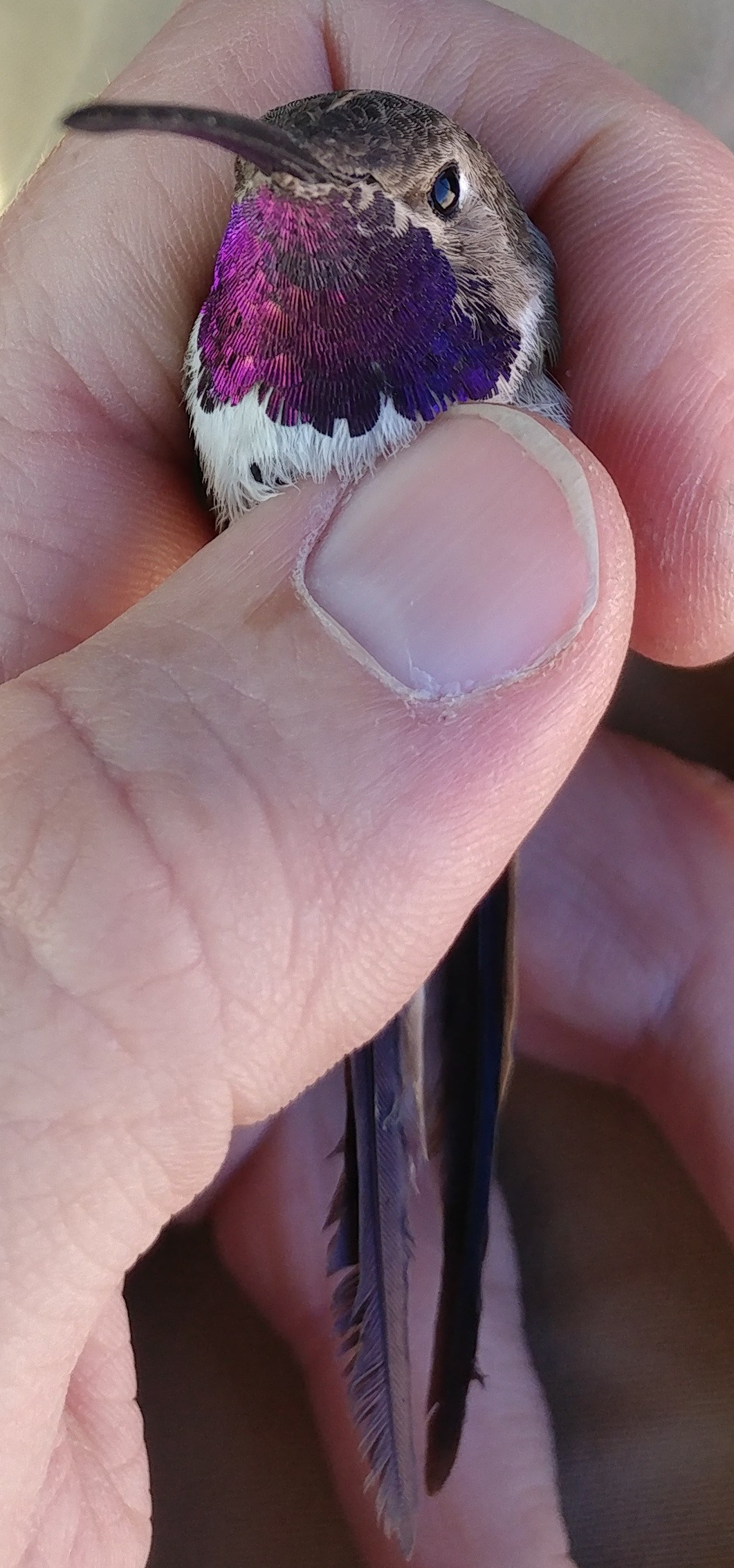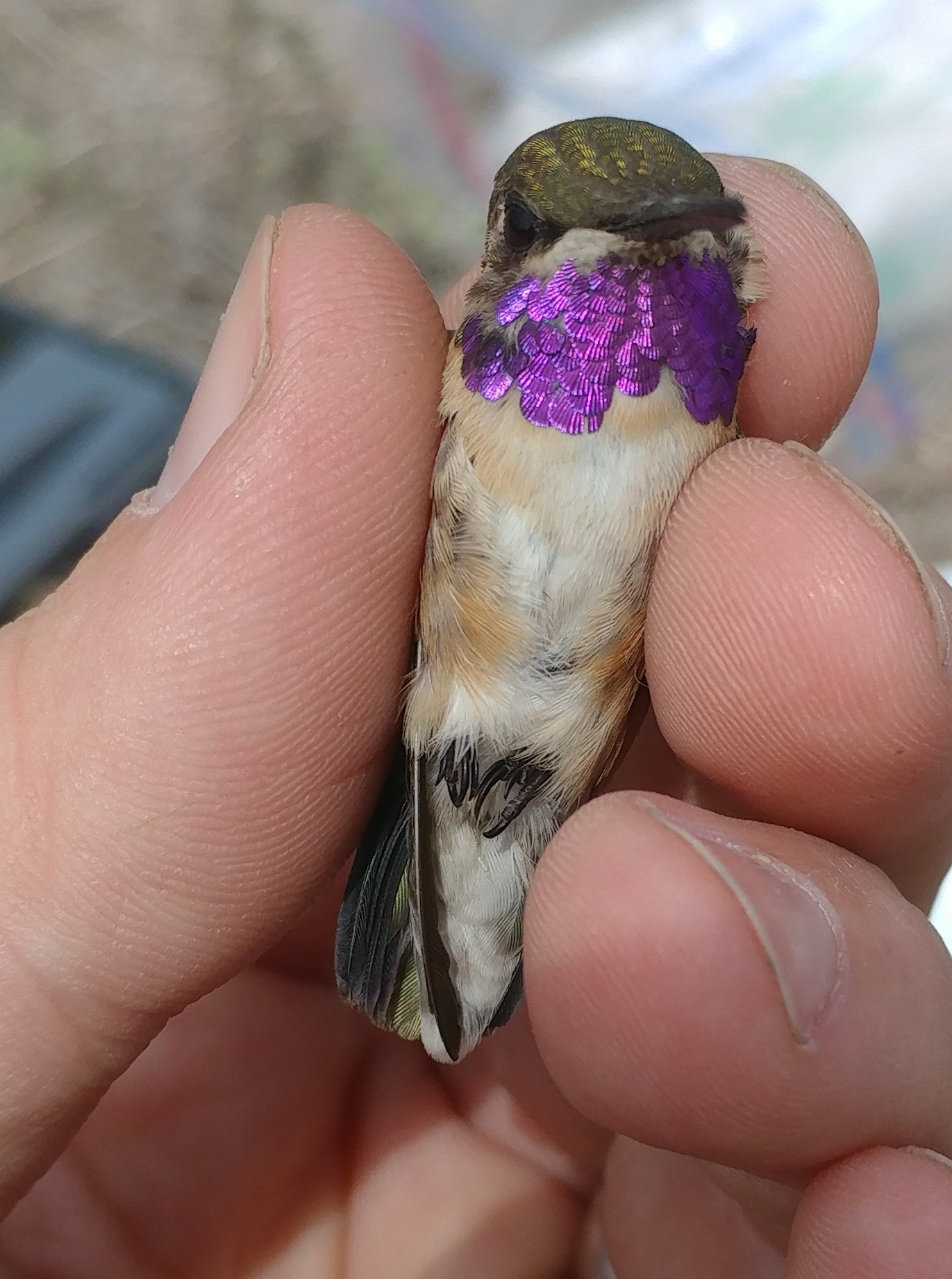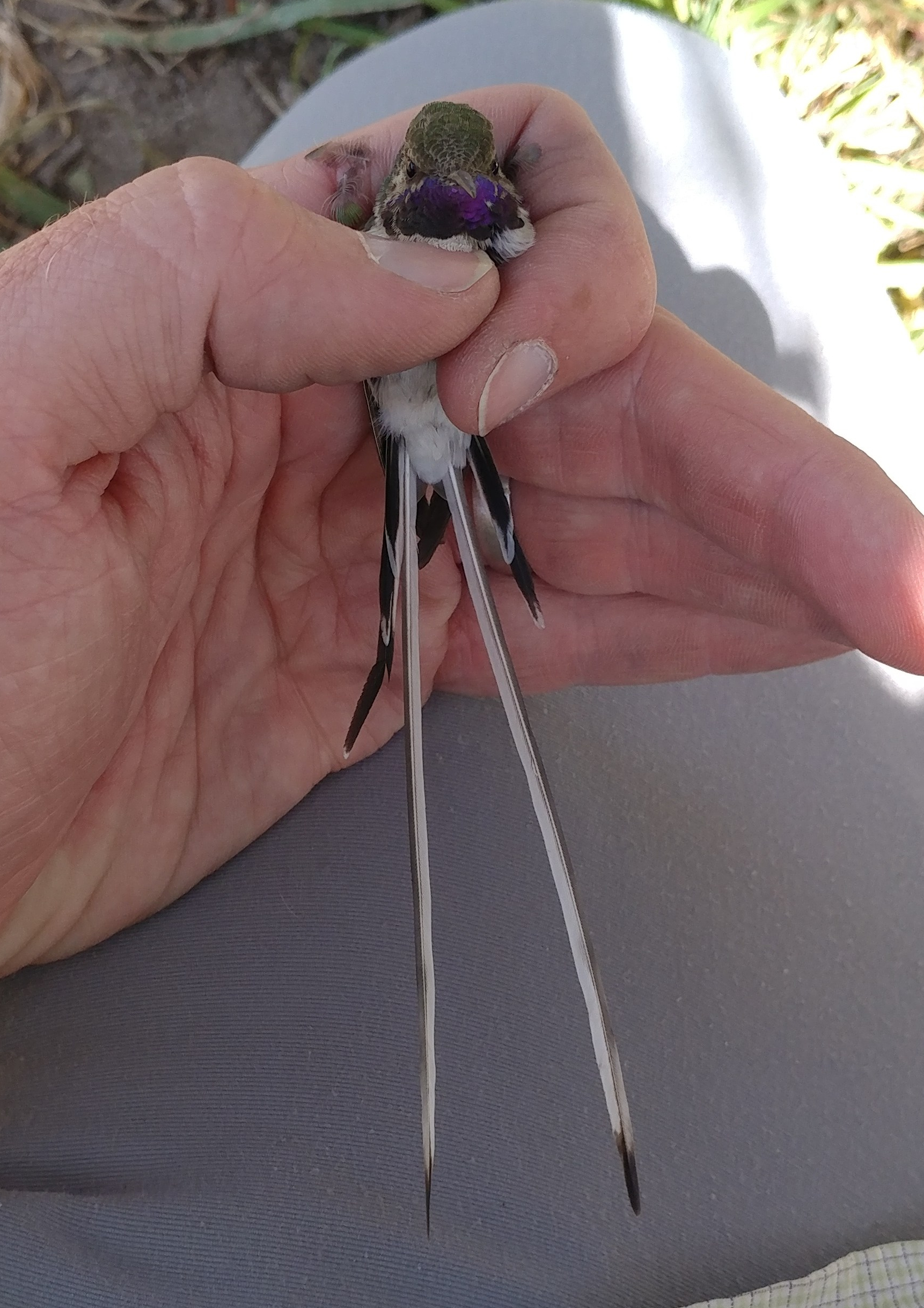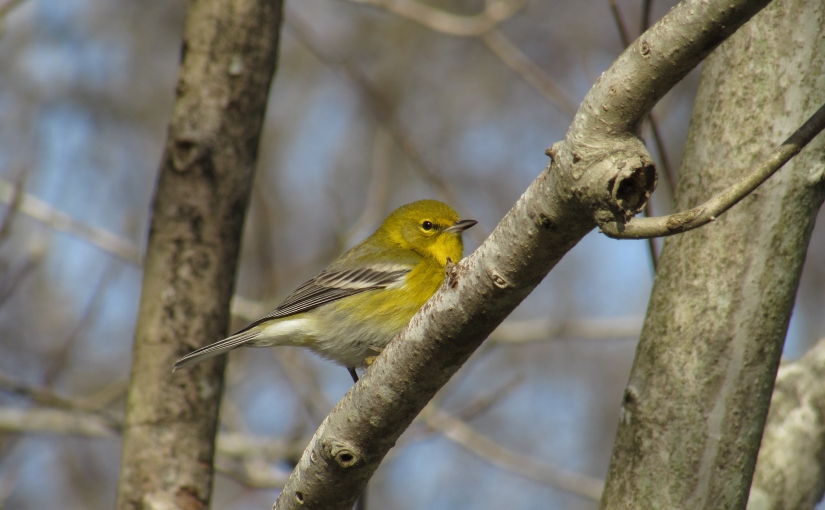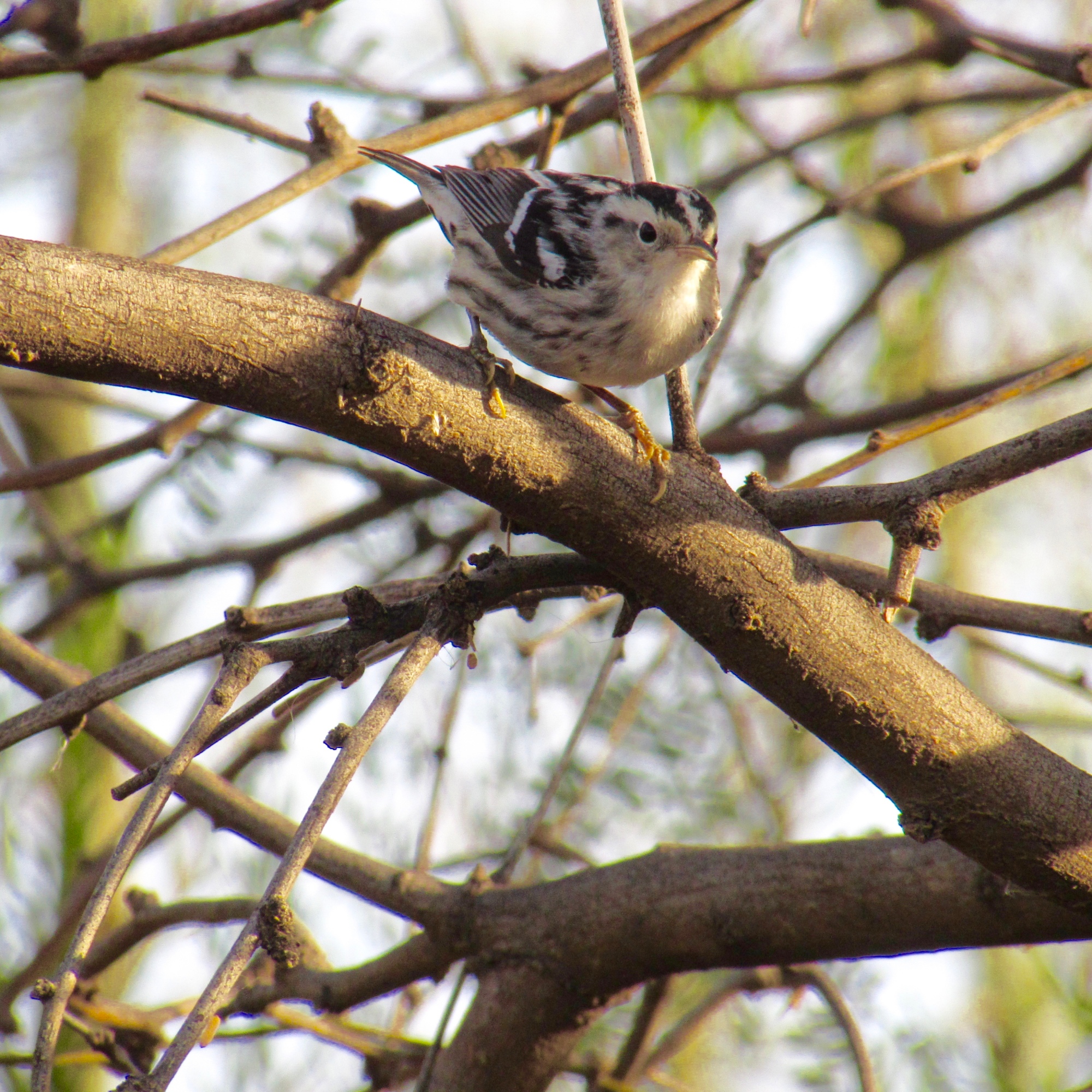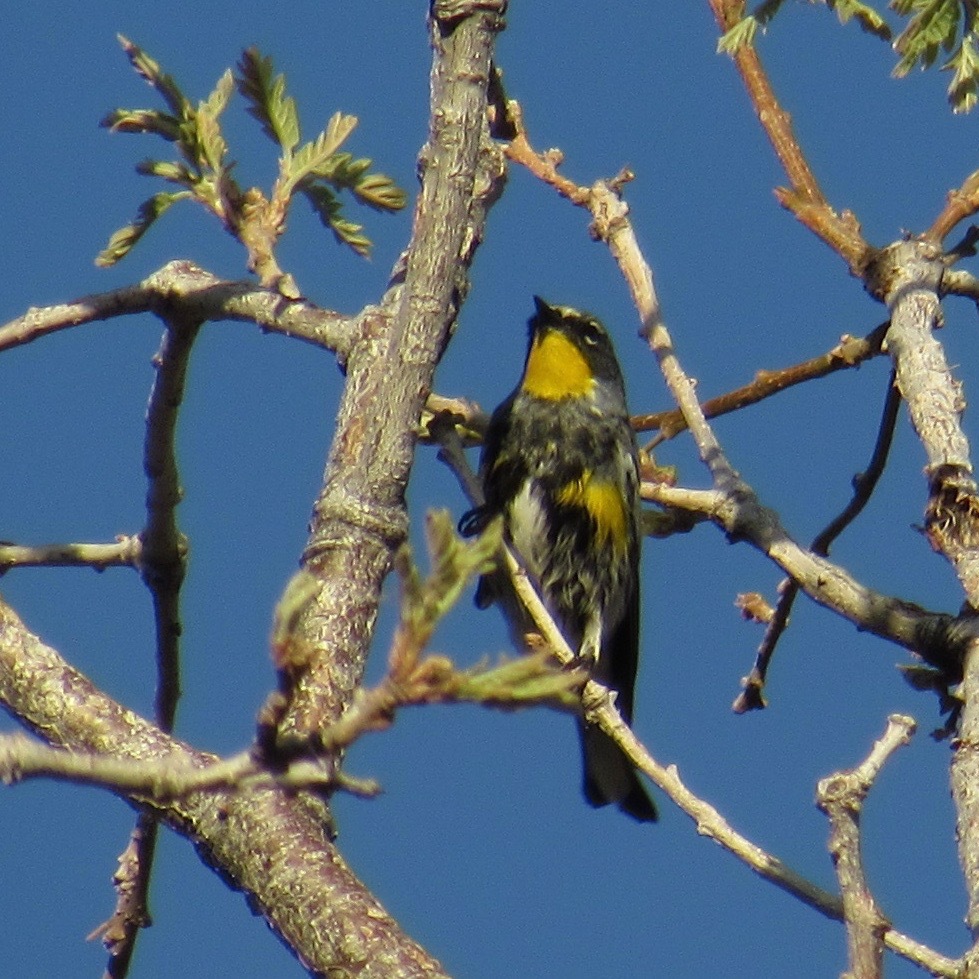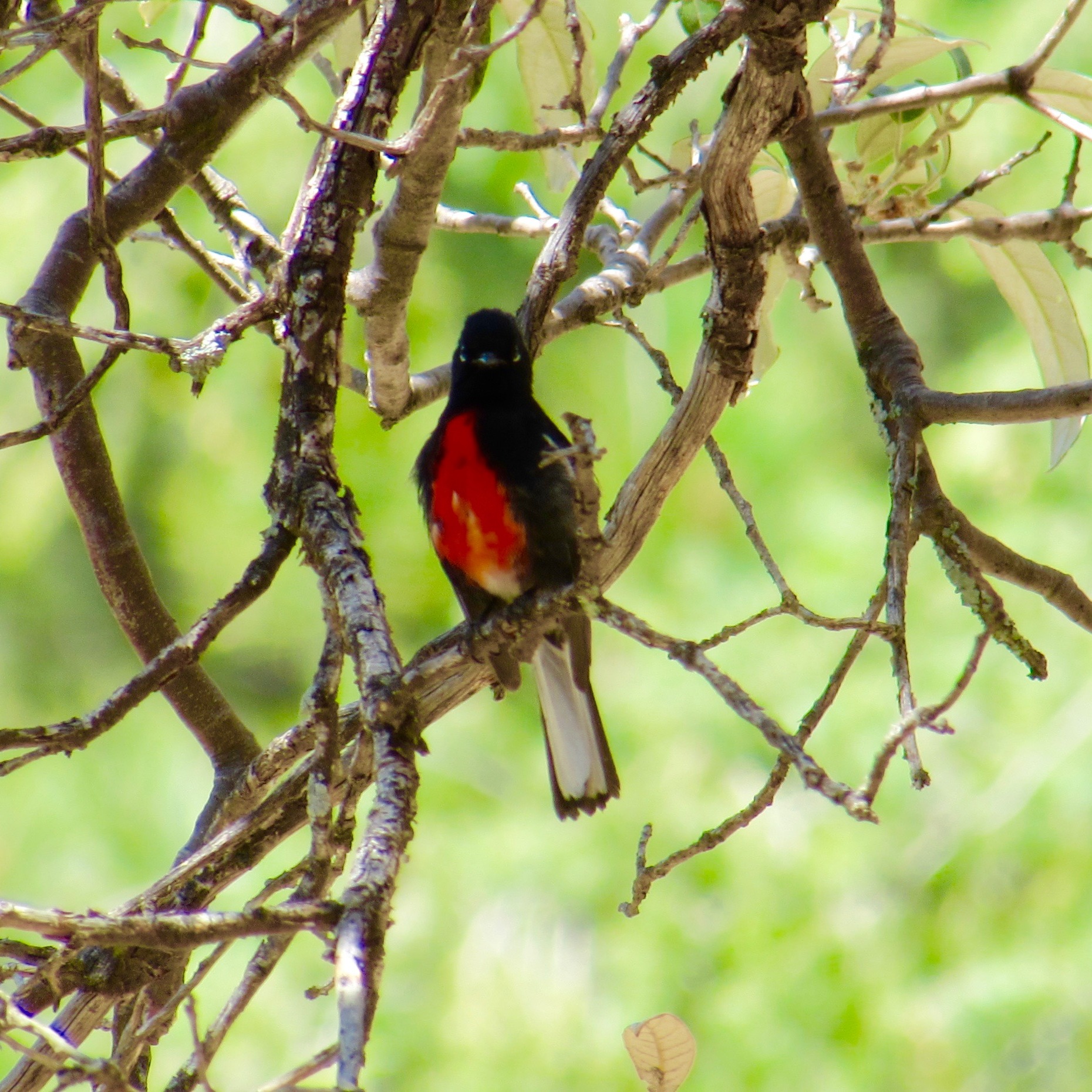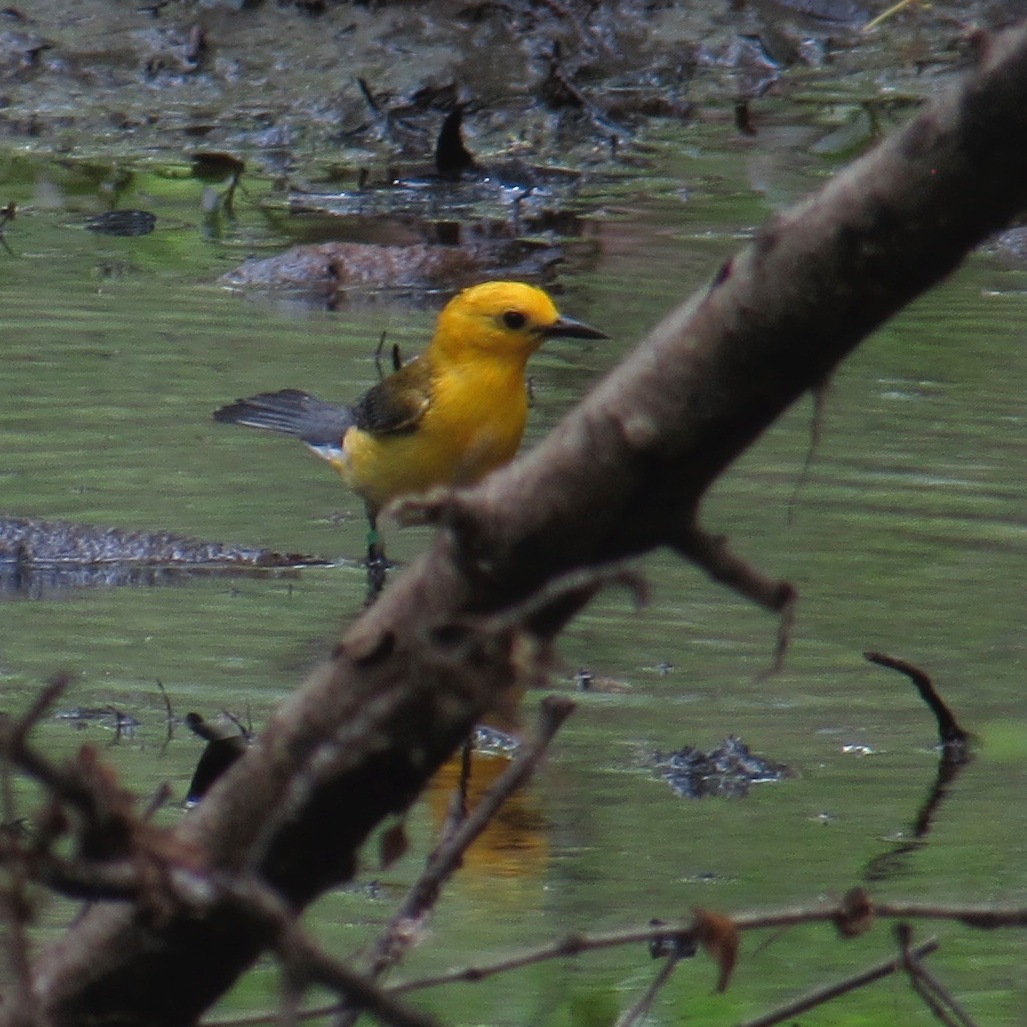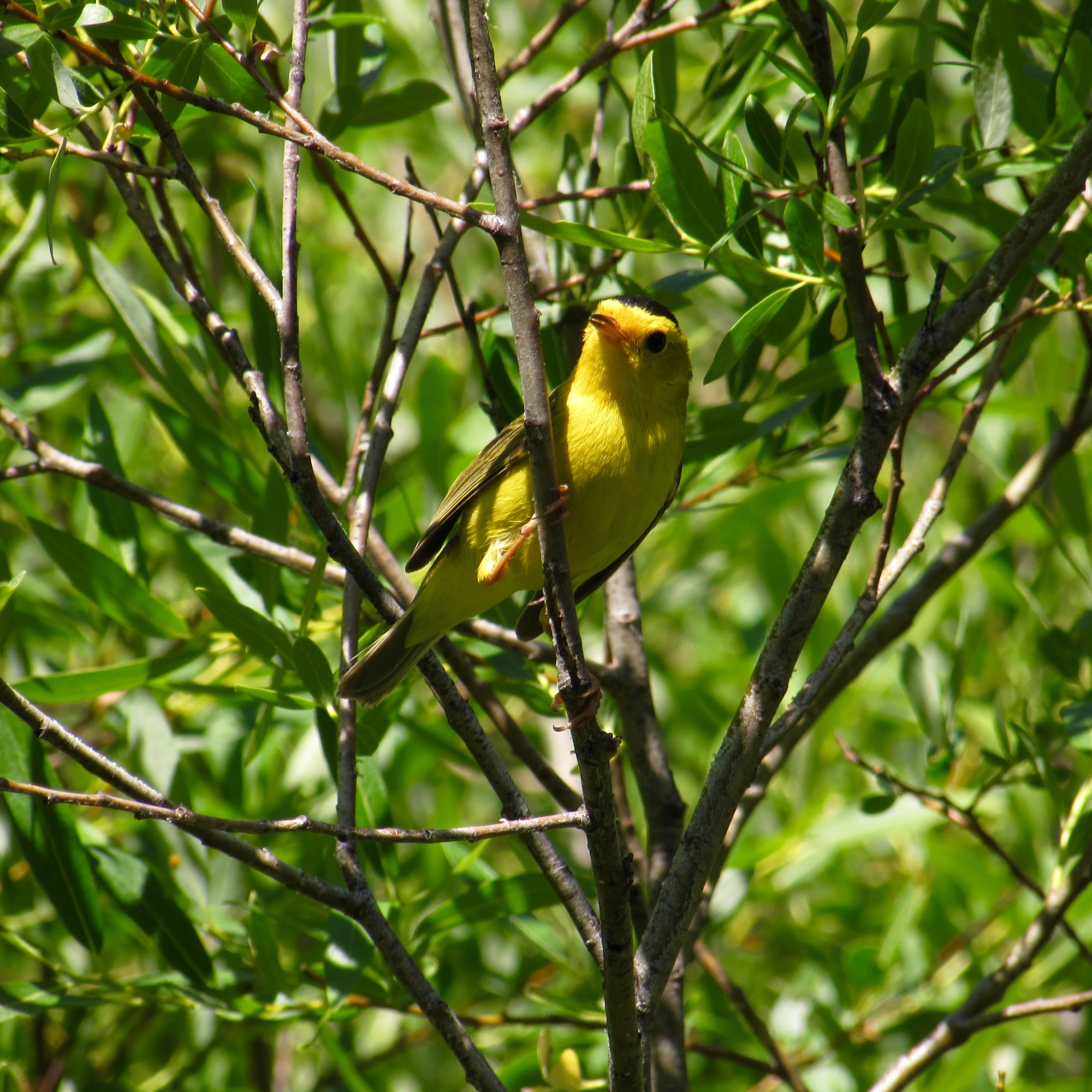While communicating, animals can use behaviors and the environment to modulate their signals, either to increase their effectiveness or potentially create unique signal properties. For example, during hummingbird courtship a male’s iridescent throat plumage is oriented and positioned towards females and the sun in specific ways through their courtship dances to alter how their plumage appears throughout their dance. Thus, the male’s behavior and signaling environment modulate the appearance of that male’s colorful plumage to the female creating a unique signal property (color appearance) not possible outside of this context. Using six North American hummingbird species as my study system, my research in this theme focuses on understanding the mechanics of behavioral and environmental signal modulation, how signal modulation varies among species, and how male plumage, signal environment, courtship dances, and their interactions co-evolved.
Through a novel display re-creation method, I developed, where I mapped the orientation-and-positional movements of video-recorded hummingbird courtship dances combined with full-spectrum photography (Simpson & McGraw 2018a), I quantified male color appearance, thus directly measuring how males modulate their signals with behavior and the environment. I discovered that male color appearance is not solely tied to the color of his ornaments (brighter feathers does not mean brighter appearance), due to behavioral modulations of appearance (Simpson & McGraw 2018b, Simpson & McGraw 2019a). These findings demonstrates the need to break with traditional, static-snapshot color measurements and instead study animal coloration as a dynamic trait or behavior, while also illustrating the importance of signal modulation in communication. Among species, I found that color appearance evolved through two divergent evolutionary pathways alongside exaggeration in plumage or behavioral displays (Simpson & McGraw 2019b).
I am continuing to study behavioral modulation of signals in Peruvian hummingbird species, to test if other hummingbird lineages use similar or unique behaviors and environments to modulate their plumage in completely different geographic locations.
My other research themes:
1. Drivers of signal evolution and diversity
2. Evolution of signal production mechanisms
